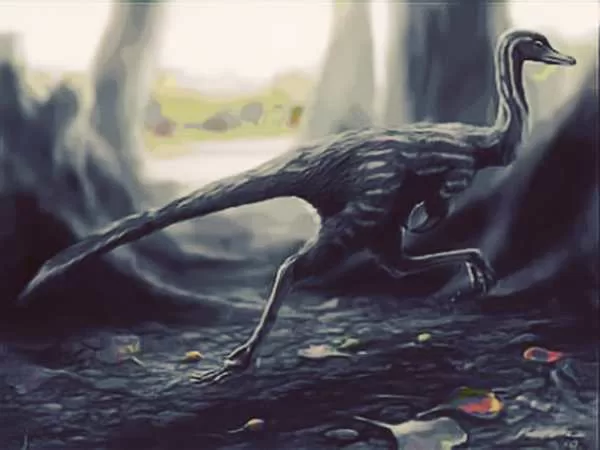In an exciting breakthrough for paleontology, scientists have unveiled a pint-sized, two-legged dynamo from the Late Cretaceous period. The newly discovered dinosaur, Xixianykus zhangi, is grabbing headlines as the latest example of an “extreme” runner among non-avian dinosaurs. The discovery, detailed in the journal Zootaxa, was made by an international team led by Xing Xu from the Chinese Academy of Sciences. This tiny dinosaur, dating back about 85 million years, showcases remarkable adaptations for speed and agility.
The Speedy and Sleek Xixianykus
Xixianykus, named after its region of origin (Xixia), combined with the Greek word “onyx” for claw, and in honor of the renowned paleontologist Zhang Wentang, stands out for its extreme limb proportions. With a height of around 20 inches and an estimated weight of just 1.6 pounds, this dinosaur exemplifies an evolutionary marvel in speed and efficiency. The study reveals that Xixianykus belonged to the parvicursorine group of theropods, characterized by their incredible running capabilities.
According to Corwin Sullivan, a co-author of the study, “The limb proportions of Xixianykus are among the most extreme ever recorded for a theropod dinosaur.” While the exact top speed of Xixianykus remains unknown, its anatomical structure clearly indicates that it was an exceptionally efficient runner. This agility would have been crucial for both catching prey and evading predators in the perilous ecosystem of its time.
Anatomy and Adaptations
The Xixianykus had notably short thigh bones and long, slender legs, suggesting it was not only a speed demon but also a skilled digger. Its powerful limbs, combined with a specialized claw on each hand, point to a diet focused on insects such as ants and termites. The short, robust thigh bones imply that this dinosaur could efficiently dig into the ground to access its insect prey. As David Hone, another study co-author, points out, “Digging and running actually work quite well together. Some modern termite-eating species travel long distances between colonies of their prey, so as an efficient runner, Xixianykus would have been able to follow this pattern.”
Xixianykus’s adaptation to both running and digging highlights its ability to exploit a niche ecological role. The digging behavior, combined with its speed, would have allowed it to cover large areas in search of food, similar to modern aardvarks and giant anteaters.
Ecological and Evolutionary Insights
The discovery of Xixianykus provides valuable insights into the diversity and evolution of alvarezsaurs, a group of dinosaurs known for their peculiar anatomy. The Majiacun Formation in Henan Province, China, where Xixianykus was found, has yielded crucial information about these dinosaurs’ adaptation strategies and their environment. Despite being small in size, Xixianykus lived in an era dominated by larger, more fearsome predators like the Tyrannosaurus Rex. Its size and speed would have been essential traits for survival in such a hostile environment.
The small stature of Xixianykus and its specialization in insectivory are significant aspects of its evolutionary strategy. It likely had to travel significant distances to find food, a trait that aligns with the behavior observed in some modern insectivores. This adaptation for a high-speed, high-efficiency lifestyle underscores the dynamic nature of dinosaur evolution and the varied ecological roles that different species occupied.
Conclusion
Xixianykus zhangi is more than just a fascinating fossil; it represents a remarkable evolutionary experiment in speed and agility. This tiny dinosaur’s extreme adaptations for running and digging highlight the diverse strategies employed by dinosaurs to thrive in their respective environments. The discovery adds a new dimension to our understanding of dinosaur diversity and adaptation, offering a glimpse into the life of a swift, insect-eating speedster from the Late Cretaceous period.
For paleontologists and dinosaur enthusiasts alike, Xixianykus stands as a testament to the incredible variety of life that once roamed the Earth. Its unique combination of speed and digging prowess enriches our understanding of how dinosaurs evolved and adapted to their surroundings.

